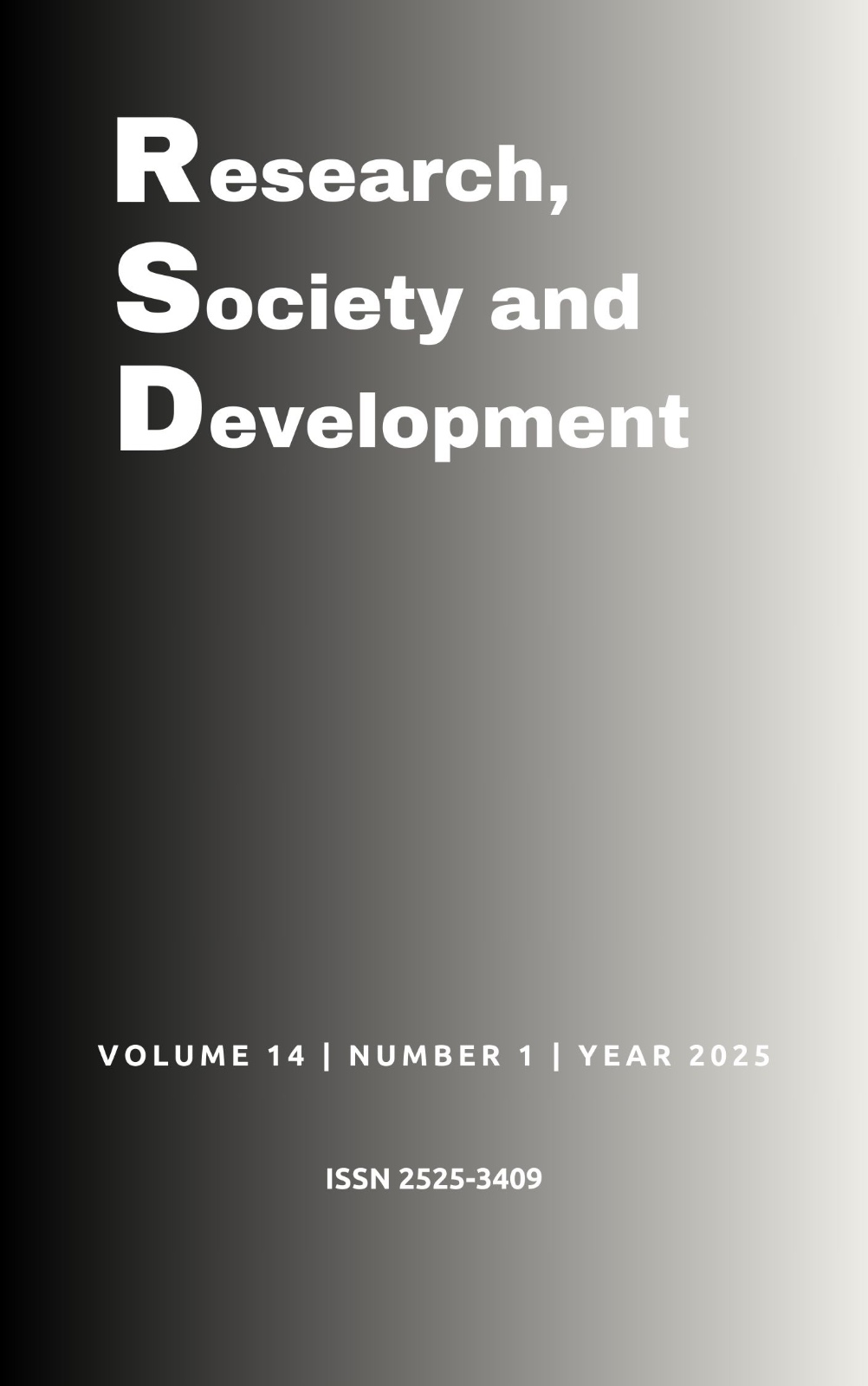Autoimmune hepatitis in a patient with human immunodeficiency virus: Case report
DOI:
https://doi.org/10.33448/rsd-v14i1.47929Keywords:
Autoantibodies, Antiretroviral Therapy, Chronic Liver Disease, Autoimmmune Hepatitis.Abstract
Autoimmune hepatitis (AIH) is a chronic liver disease that predominantly affects women, characterized by hypergammaglobulinemia, positivity for autoantibodies, and histological changes in the liver. Without treatment, it can progress to cirrhosis and liver failure. Immune reconstitution inflammatory syndrome (IRIS), which occurs after the initiation of antiretroviral therapy in patients with HIV (human immunodeficiency virus), can trigger AIH in individuals with a genetic predisposition to autoimmune diseases. IRIS leads to an intensification of inflammatory symptoms due to the immune system overreacting to pre-existing opportunistic infections. This article aims to present a case report of a patient living with HIV who developed AIH after starting antiretroviral therapy. Clinical management with immunosuppressants proved to be effective, highlighting the importance of continuous monitoring for the early identification of associated complications and appropriate therapeutic adjustment.
References
Alvarez, F., et al. (1999). International Autoimmune Hepatitis Group Report: Review of criteria for diagnosis of autoimmune hepatitis. Journal of Hepatology, 31(5), 929–938.
Baril, J. G., et al. (2019). Dolutegravir for the treatment of HIV-1 infection: A review of its clinical efficacy and safety. Therapeutic Advances in Infectious Disease, 6, 2049936119850329. https://doi.org/10.1177/2049936119850329.
Cai, C. W., & Sereti, I. (2021). Residual immune dysfunction under antiretroviral therapy. Seminars in Immunology, 51. https://www.clinicalkey.com](https://www.clinicalkey.com.
Cazanave, A. C., Rakotondravelo, S., Morlat, P., Blanco, P., Bonnet, F., & Beylot, J. (2006). Hépatite auto-immune chez une patiente co-infectée VIH-VHC: Difficultés diagnostiques et thérapeutiques. La Revue de Médecine Interne, 27, 414–419. file:///C:/Users/acer/Downloads/Cazanave%20et%20al.pdf.
Fallatah, H.I.; Akbar, H.O. (2012). Autoimmune Hepatitis as a unique form of an autoimmune liver disease: Immunological Aspects and Clinical Overview. Hindawi Publishing Corporation. v.2012, article ID 312817, 17 pages
Ferguson, L. A. (2014). Autoimmune Hepatitis: A noninfectious killer. Journal of the American Association of Nurse Practitioners. 26, 13-18.
Friedman, L. S. (2022, abril 5). Approach to the patient with abnormal liver biochemical and function tests. In: UptoDate [Internet]. https://www.uptodate.com/contents/approach-to-the-patient-with-abnormal-liver-biochemicaland-function-tests.
Goldberg, E., Chopra, S., & Rubin, J. N. (2022, maio 12). Acute liver failure in adults: Etiology, clinical manifestations, and diagnosis. In: UptoDate [Internet]. https://www.uptodate.com/contents/acute-liver-failure-in-adultsetiology-clinical-manifestations-and-diagnosis.
Hartl, J., et al. (2016). Transient elastography in autoimmune hepatitis: Timing determines the impact of inflammation and fibrosis. Journal of Hepatology, 65(4), 769–775.
Heneghan, M. A. (2022, abril 4). Overview of autoimmune hepatitis. In UpToDate [Internet].
https://www.uptodate.com/contents/overview-of-autoimmune-hepatitis.
Liberal, R., et al. (2013). Autoimmune hepatitis: A comprehensive review. Journal of Autoimmunity, 41, 126–139.
Moura, M. C., et al. (2014). Autoimmune hepatitis in a patient infected by HIV-1 and under highly active antiretroviral treatment: Case report and literature review. World Journal of Immunology. https://academic.oup.com/cid/article/46/1/e12/339479.
Murthy, A. R., Marulappa, R., Hegde, U., Kappadi, D., Ambikathanaya, U. K., & Nair, P. (2015). Treatment guidelines and prognosis of immune reconstitution inflammatory syndrome patients: A review. Journal of International Oral Health, 7(4), 92–95.
Navarro, RMC (2008). Avaliação da progressão da fibrose hepática de pacientes coinfectados por HIV/HCV em serviços de atendimento a pacientes com HIV/AIDS (Tesehttp ://www.tes.usp.br /tes/por/5 /513/tde-2506-152.
Quintero, O. L., et al. (2012). Autoimmune disease and gender: Plausible mechanism for the female predominance of autoimmunity. Journal of Autoimmunity, 38, 109–119.
Rafael, M. A., et al. (2023). Autoimmune liver disease in human immunodeficiency virus-infected patients: 3 case series. GE Portuguese Journal of Gastroenterology, 30(Suppl 2), 26–31.
Santos, R. T. T dos. (2022). Identificação de biomarcadores diagnósticos e prognósticos da síndrome inflamatória da reconstituição imune associada à tuberculose em pacientes coinfectados com HIV-1 (Tese de Doutorado). Universidade Federal da Bahia, Faculdade de Medicina, Instituto Gonçalo Moniz, Fundação Oswaldo Cruz, Salvador.
Sax, P. E. (2024). Overview of immune reconstitution inflammatory syndromes. In Gandhi, R. T., & Mitty, J. (Eds.), UpToDate. https://www.uptodate.com.
Singanayagam, A., & Bernal, W. (2015). Update on acute liver failure. Current Opinion in Critical Care, 21(2), 134–141. https://www.uptodate.com/contents/immune-reconstitution-inflammatory-syndrome
Whitehouse, T., & Wendon, J. (2013). Acute liver failure. Best Practice & Research Clinical Gastroenterology, 27(5), 757–769.
Downloads
Published
Issue
Section
License
Copyright (c) 2025 Rachel Leite Guedes; João Antônio Ayres da Motta Teodoro; Liliana Sampaio Costa Mendes; Norma Thomé Jucá; Marcos de Vasconcelos Carneiro

This work is licensed under a Creative Commons Attribution 4.0 International License.
Authors who publish with this journal agree to the following terms:
1) Authors retain copyright and grant the journal right of first publication with the work simultaneously licensed under a Creative Commons Attribution License that allows others to share the work with an acknowledgement of the work's authorship and initial publication in this journal.
2) Authors are able to enter into separate, additional contractual arrangements for the non-exclusive distribution of the journal's published version of the work (e.g., post it to an institutional repository or publish it in a book), with an acknowledgement of its initial publication in this journal.
3) Authors are permitted and encouraged to post their work online (e.g., in institutional repositories or on their website) prior to and during the submission process, as it can lead to productive exchanges, as well as earlier and greater citation of published work.


